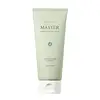What's inside
What's inside
 Key Ingredients
Key Ingredients

 Benefits
Benefits

 Concerns
Concerns

 Ingredients Side-by-side
Ingredients Side-by-side

Water
Skin ConditioningSodium Cocoyl Alaninate
Glycerin
HumectantDisodium Cocoamphodiacetate
CleansingAcrylates/C10-30 Alkyl Acrylate Crosspolymer
Emulsion StabilisingPotassium Cocoate
EmulsifyingCoco-Glucoside
CleansingDecyl Glucoside
CleansingCentella Asiatica Extract
CleansingHouttuynia Cordata Powder
Skin ConditioningMadecassoside
AntioxidantCeramide NP
Skin ConditioningPanthenol
Skin ConditioningGluconolactone
Skin ConditioningCapryloyl Salicylic Acid
ExfoliatingHyaluronic Acid
HumectantTheobroma Cacao Seed Extract
AntioxidantSodium Chloride
MaskingDisodium EDTA
Dextrin
AbsorbentHexylene Glycol
EmulsifyingPotassium Benzoate
PreservativeHydroxyacetophenone
AntioxidantWater, Sodium Cocoyl Alaninate, Glycerin, Disodium Cocoamphodiacetate, Acrylates/C10-30 Alkyl Acrylate Crosspolymer, Potassium Cocoate, Coco-Glucoside, Decyl Glucoside, Centella Asiatica Extract, Houttuynia Cordata Powder, Madecassoside, Ceramide NP, Panthenol, Gluconolactone, Capryloyl Salicylic Acid, Hyaluronic Acid, Theobroma Cacao Seed Extract, Sodium Chloride, Disodium EDTA, Dextrin, Hexylene Glycol, Potassium Benzoate, Hydroxyacetophenone
Glycerin
HumectantWater
Skin ConditioningSodium Cocoyl Isethionate
CleansingSodium Cocoyl Glycinate
CleansingPrunus Amygdalus Dulcis Seed Meal
Abrasive1,2-Hexanediol
Skin ConditioningCoconut Acid
CleansingSodium Methyl Cocoyl Taurate
CleansingCellulose
AbsorbentOryza Sativa Powder
Sodium Isethionate
CleansingPyrus Malus Fiber
AbrasiveHamamelis Virginiana Extract
AntiseborrhoeicGlyceryl Stearate
EmollientHydroxypropyl Starch Phosphate
Sodium Chloride
MaskingXanthan Gum
EmulsifyingParfum
MaskingGardenia Florida Fruit Extract
Skin ConditioningEthylhexylglycerin
Skin ConditioningDextrin
AbsorbentDisodium EDTA
Calendula Officinalis Extract
Skin ConditioningHouttuynia Cordata Extract
Skin ConditioningOpuntia Ficus-Indica Stem Extract
Skin ConditioningGlycerin, Water, Sodium Cocoyl Isethionate, Sodium Cocoyl Glycinate, Prunus Amygdalus Dulcis Seed Meal, 1,2-Hexanediol, Coconut Acid, Sodium Methyl Cocoyl Taurate, Cellulose, Oryza Sativa Powder, Sodium Isethionate, Pyrus Malus Fiber, Hamamelis Virginiana Extract, Glyceryl Stearate, Hydroxypropyl Starch Phosphate, Sodium Chloride, Xanthan Gum, Parfum, Gardenia Florida Fruit Extract, Ethylhexylglycerin, Dextrin, Disodium EDTA, Calendula Officinalis Extract, Houttuynia Cordata Extract, Opuntia Ficus-Indica Stem Extract
 Reviews
Reviews

Ingredients Explained
These ingredients are found in both products.
Ingredients higher up in an ingredient list are typically present in a larger amount.
Dextrin is used to thicken a product and helps bind ingredients together. It is created from starch and glycogen.
As an emulsifier, dextrin prevents ingredients from separating. This helps elongate a product's shelf life.
Studies show coating UV filters with dextrin prevents these ingredients from being absorbed. This helps UV ingredients last longer on the skin.
Learn more about DextrinDisodium EDTA plays a role in making products more stable by aiding other preservatives.
It is a chelating agent, meaning it neutralizes metal ions that may be found in a product.
Disodium EDTA is a salt of edetic acid and is found to be safe in cosmetic ingredients.
Learn more about Disodium EDTAGlycerin is already naturally found in your skin. It helps moisturize and protect your skin.
A study from 2016 found glycerin to be more effective as a humectant than AHAs and hyaluronic acid.
As a humectant, it helps the skin stay hydrated by pulling moisture to your skin. The low molecular weight of glycerin allows it to pull moisture into the deeper layers of your skin.
Hydrated skin improves your skin barrier; Your skin barrier helps protect against irritants and bacteria.
Glycerin has also been found to have antimicrobial and antiviral properties. Due to these properties, glycerin is often used in wound and burn treatments.
In cosmetics, glycerin is usually derived from plants such as soybean or palm. However, it can also be sourced from animals, such as tallow or animal fat.
This ingredient is organic, colorless, odorless, and non-toxic.
Glycerin is the name for this ingredient in American English. British English uses Glycerol/Glycerine.
Learn more about GlycerinChances are, you eat sodium chloride every day. Sodium Chloride is also known as table salt.
This ingredient has many purposes in skincare: thickener, emulsifier, and exfoliator.
You'll most likely find this ingredient in cleansers where it is used to create a gel-like texture. As an emulsifier, it also prevents ingredients from separating.
There is much debate on whether this ingredient is comedogenic. The short answer - comedogenic ratings don't tell the whole story. Learn more about comegodenic ratings here.
The concensus about this ingredient causing acne seems to be divided. Research is needed to understand if this ingredient does cause acne.
Scrubs may use salt as the primary exfoliating ingredient.
Learn more about Sodium ChlorideWater. It's the most common cosmetic ingredient of all. You'll usually see it at the top of ingredient lists, meaning that it makes up the largest part of the product.
So why is it so popular? Water most often acts as a solvent - this means that it helps dissolve other ingredients into the formulation.
You'll also recognize water as that liquid we all need to stay alive. If you see this, drink a glass of water. Stay hydrated!
Learn more about Water